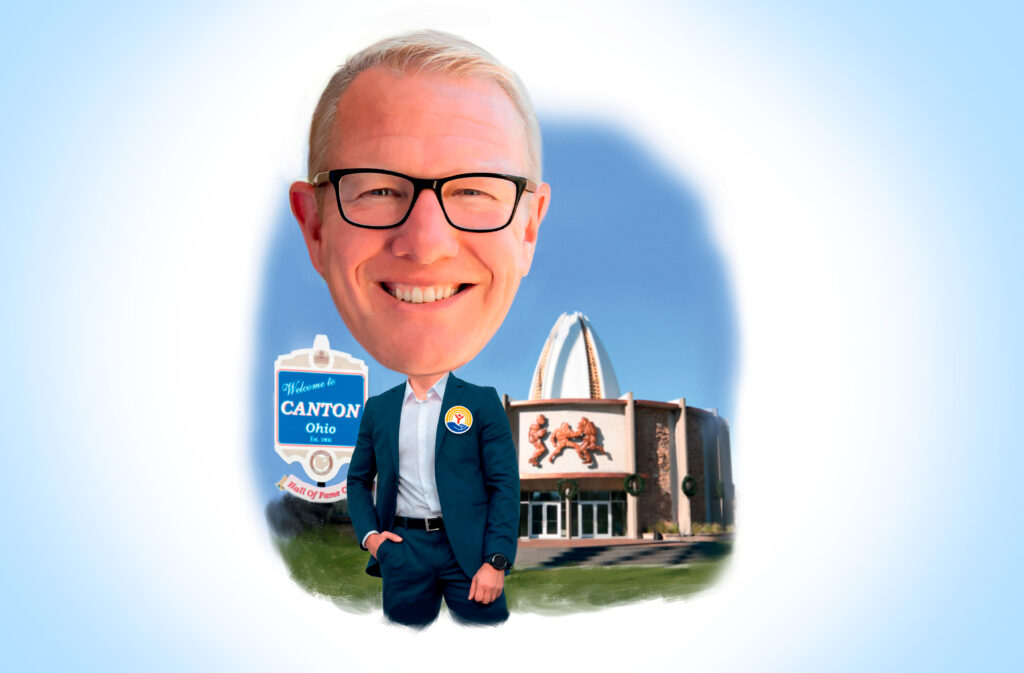
Ignoring the Signs

...Karen Farris was challenging her partners to take advantage of new opportunities. Farris is the chairman of Roach Howard Smith & Barton (RHSB), the large independent brokerage in Dallas, and she is no stranger to dealing with industry challenges or crafting new ways to compete in the marketplace.
“We realized early on that we will need to bring more to the table than a quote or a product,” Farris says.
Specifically, RHSB is strengthening its product offerings in voluntary benefits, wellness and financial services. The firm also outsources the servicing of small commercial accounts and is shifting its resources to larger clients.
Farris ran RHSB for 17 years as president and CEO while serving on the boards of national industry organizations and nonprofit groups. As chairman of Assurex Global, the worldwide brokerage network, she found a new CEO and helped integrate the international and domestic governance bodies, bolstering member market opportunities.
Over more than 30 years as an insurance executive, Farris has shattered the glass ceiling in a male-dominated industry. Those who know her say she never believed that being a woman should make any difference, so nobody else did either.
Confident but unassuming, Farris climbed corporate ladders by earning the respect and admiration of her (mostly male) colleagues. In return, they held the ladder steady, cheering her rung by rung.
“We all respect and admire Karen as a lady and friend,” says Jim Pender, former chairman of The Council and honorary chairman of BB&T-Oswald Trippe and Co., based in Fort Myers, Fla. “Her gender did not make a bit of difference.”
Farris earned respect through her in-depth industry knowledge and effective relationship building, says Jim Hackbarth, CEO of Columbus, Ohio–based Assurex. “She will basically tell you what is on her mind, but gracefully and inoffensively,” he says. “She does what she says she will do.”
“She is not one to pat herself on the back,” says Lyn Berman, executive director and founder of Attitudes & Attire, one of many nonprofit groups for which Farris volunteers.
When Berman told Farris she was being nominated for the Kim Dawson Award for exemplifying the “full potential and empowerment of all women,” Farris did not want to accept. She said other women were more deserving. “I had to talk her into it,” Berman says.
A big-picture thinker, Farris also understands the inner workings of insurance products and their markets.
“Karen is a master of her craft,” says Katie Guiou, who once worked for Farris and is now a national account
manager for the Insurance Exchange at LexisNexis Risk Solutions. “Her technical knowledge of insurance is second to none.”
Coming of Age
Farris was raised in Euclid, Ohio, the largest inner-ring suburb on Cleveland’s east side. During the post-WWII economic boom, Euclid was home to both executives and factory workers, many of them first- and second-generation immigrants from Central and Eastern Europe.
Her father built and designed displays, including the Cleveland Indians’ logo, Chief Wahoo, which was posted on the team’s old stadium. Her stay-at-home mother committed herself to her daughters and later worked as a teaching assistant. Her parents taught her to believe she could accomplish anything. Ignoring voices to the contrary, she never thought being a female should hold her back from anything. She showed a shrewd sales acumen at a young age while peddling Campfire Girls candy.
“Our secret was niche marketing by going door-to-door at the many neighborhood bars dressed in our uniforms and carrying our boxes of candy as our mothers waited outside,” she says.
She left home in 1968 for Bowling Green State University, where she majored in education, minored in business administration and planned for a career as a vocational education teacher. “There was a great deal of overlap in the course curriculum, and, quite frankly, the counselors were steering women away from a degree solely in business administration,” she says.
During a stint as a student teacher, Farris tried incorporating new ideas and concepts into the classroom. For her efforts, she was deemed difficult to manage and received a review she describes as “hideous.” Teaching’s loss was the insurance industry’s gain.
As her career goals were changing, the country was going through unprecedented social upheaval. Like their counterparts at Kent State 150 miles to the east, many students at Bowling Green were demonstrating for the rights of women and minorities while protesting the increasingly unpopular Vietnam War. The unrest would open career opportunities to women and minorities like never before.
Farris graduated in 1972, the same year Congress passed the Equal Employment Opportunity Act. Companies were actively looking for qualified female candidates to fill entry-level management training positions. Farris set her sights on IBM. For practice, she interviewed at Aetna.
“I couldn’t even pronounce the name and had no idea of what a career in insurance would entail,” she says.
IBM offered her a post in New York City. But her parents thought Aetna’s location in Hartford, Conn., seemed a safer option.
After working two years, mainly as a college recruiter for the management-training program, Farris moved to the insurer’s Dallas office to pursue a marketing career. “Where would you send a Yankee saleswoman?” she asks, laughing. “Probably not the South.”
There were not many female business-to-business sales professionals in the mid-1970s.
“There were probably prejudices,” she acknowledges. “It did not occur to me that women were not running companies or making decisions or that customers wouldn’t buy insurance because I was a female.”
She attracted the support of her next-door neighbor, an airline pilot named Larry Farris. A Texas native, he was a “walking encyclopedia of Texas,” she says, because he shared local knowledge of different areas of Texas to help her relate to potential customers.
“He helped me understand and appreciate what makes Texans special,” she recalls. “Without his coaching and insight, I would have failed.”
The two were married in 1974, and Farris immediately acquired three stepchildren and supportive in-laws who became especially important to her since her parents had died before seeing her success.
Farris says her Southern Baptist faith is “a big part of who I am.” This does not raise an eyebrow in Dallas. “It is not unusual for us to pray before a shareholder or celebration lunch,” she says. “It is part of the culture we inherited from our founders.”
Farris spent eight years encouraging insurance brokers and agents to sell Aetna’s products. That changed when one of her clients, Richard Roach, president of Roach Howard Smith & Hunter, asked for her feedback on finding a marketing professional. They quickly realized she was the best candidate.
President and CEO
After a few years of marketing, Farris went into sales. “I wanted to be where the action was,” she says.
She built relationships with companies, heard their stories and contributed to their success as their strategic partner. For Farris, the experience was a lot of fun. “I just liked the thrill of the hunt,” she says.
She specialized in the technology sector, creating a unique industry-specific approach resulting in $750,000 in revenue growth. The results impressed Roach, who in 1994 chose her to be the firm’s next president and CEO.
“My mouth just dropped,” she says. “I was stunned.”
Farris, who had worked at the firm for 12 years, understood that many industry successions occurred through family ties. Putting a woman at the helm of a major insurance brokerage in Dallas in the early 1990s, she says, “just didn’t happen.” But Pender says that Roach “really believed in Karen Farris, no doubt about it.”
RHSB had about 30 employees when Farris became CEO. By the time she retired in 2011, the company had tripled its revenue and hired another 40 workers. The growth happened both organically and through a merger with L. T. Barton Insurance, a move that precipitated the company’s name change to Roach Howard Smith & Barton. Under her leadership, RHSB appeared consistently on Reagan Consulting’s best practices company list.
Her first order of business was transitioning the ownership from the firm’s four original owners to 12 new shareholders through an internal stock perpetuation program. It was important to the firm’s founders that the company remain independent, she says.
Farris understood that growing the firm meant maintaining Roach’s customer-centric vision while identifying new possibilities. By paying attention to client needs, the firm began developing proprietary products. Farris developed the firm’s M&A due diligence.
Before moving on, she hired Doug Jones, her biggest competitor in the technology sector, for his expertise to take over her clients. As a result, RHSB became a member of TechAssure, an international network specializing in technology.
As CEO, she created Virtual Risk Manager, a proprietary online collaborative risk-management portal. After creating specialty practice groups around technology, public entities, management liability, nonprofits, real estate and healthcare, she put an emphasis on selling the enterprise.
She instructed producers to focus on clients’ goals and challenges and to present an optimal package of benefits and coverage. “The employee benefits and financial services have evolved to mirror our evolution to larger and more complex accounts on the p-c side,” Farris says.
Tom Hughston, a Council board member and a member of the RHSB executive committee, became CEO in 2011. From her new perspective in the chairman’s seat, Farris says, she sees things differently. “You see the opportunities more than the challenges,” she says. “You are not having to put out the day-to-day fires, so you have a more crystal-clear vision of the future because you have the luxury of time.”
Farris is setting her sights on spending more time on charitable work. “Roach always felt it was important to give back to an industry and a community that has been good to you,” she says.
What she loves about volunteering is “being able to look someone in the eye and know you have made a difference.”
Farris is board president of Attitudes & Attire, which aims to help women achieve self-sufficiency. At the American Heart Association’s Dallas headquarters, she helps make insurance purchasing decisions: “The one time in my career that I get to sit on the other side of the table,” Farris says.
She describes her time as chairman as “the best year of my life,” and while she’s enjoyed watching the company grow and working with new producers on sales strategies, by no means is she done yet. “I am looking for that next big adventure,” she says.




